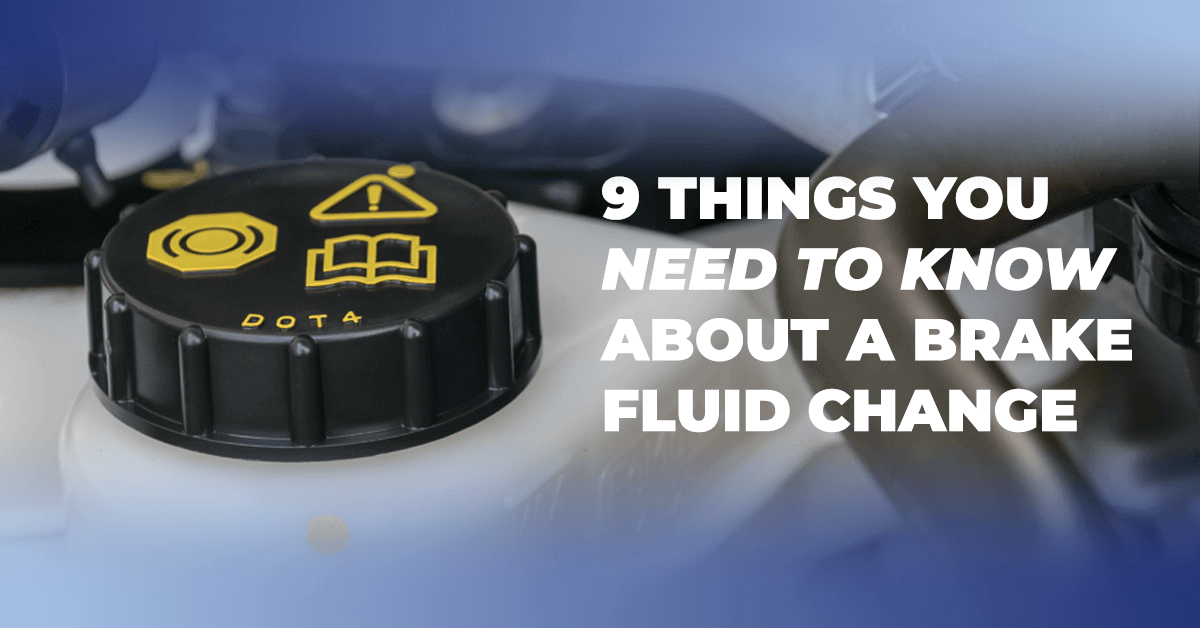By booking a brake fluid change when needed, you can extend the lifespan of your brakes and stay safe on the road.
Read on and find out what a brake fluid change is, how much it costs, and how often this fluid should be changed.
Page Contents
What Is a Brake Fluid Change?
A brake fluid change is different to a top up, as it involves ‘bleeding’ your brakes to remove the old fluid.
You should trust a skilled mechanic to do this job for you, as they can also dispose of the old brake fluid and test your braking system for you.
The mechanic will replace the old fluid with new, clean brake fluid.
A brake fluid change also includes a minor diagnostic check to ensure that your electronic ABS system bleeds the brakes correctly.
It removes every single drop of fluid from the system.
Many brake fluid replacements include a visual brake check, and many mechanics use a pressure bleeder system.
This pumps new fluid through the system under pressure and the old fluid out of the system.
Specialist equipment is used to bleed your brakes to get rid of any vapour bubbles that may be lodged in them.
How Much Does a Brake Fluid Change Cost?
As brake fluid absorbs moisture from the air over time, it will become less effective and need to be replaced.
A brake fluid change is also known as a brake fluid flush or replacement.
It is a process in which the old brake fluid is removed and replaced with fresh liquid.
A brake fluid change costs between £50 and £80 when you book through BookMyGarage.
How Often Should You Change Brake Fluid?
You should have your brake fluid changed by a professional mechanic every 2 years or 24,000 miles, whichever comes first.
You should have the fluid changed at these intervals even if you don't notice any issues with your fluid during a check.
Why Do I Need to Change My Brake Fluid?
Brake fluid gradually soaks up water from the hoses, joints, and pipes that it lubricates.
As the water content in the brake fluid rises, the temperature it boils at falls.
This can make your braking system less effective, making it more difficult to slow down or stop the vehicle.
Your brake pedal may feel soft or spongy when you depress it.
Your brakes could even fail completely, putting you in danger on the road, so you must book an appointment with a local garage at the appropriate intervals.
How Long Does It Take?
It can take as little as 30 mins for a professional mechanic to carry out a brake fluid change, depending on the vehicle.
If you attempt to replace brake fluid yourself, this will likely take a lot longer.
Does My Car Need a Brake Fluid Replacement?
When checking your brake fluid, you should look out for the following:
- Colour is too dark (dark brown/black)
- Air bubbles or spoiled brake fluid
- Lumps or debris floating in brake fluid
- Brake fluid level is more than half an inch below the maximum line
If you notice any of these issues, you should book a brake fluid change as soon as possible.
For your own safety, you should avoid driving your vehicle as much as you can because your brakes may be ineffective.
A sub-standard brake fluid replacement can affect the safety of your car, especially if you lose the ability to brake.
A professional mechanic can save you time, money and stress by carrying out an effective brake fluid change.








11 replies to "What Is a Brake Fluid Change?"
Levi Armstrong
June 15th, 2020
Drew Hickman
June 15th, 2020
Evelyn
May 17th, 2021
Drew Hickman
May 17th, 2021
Alan O'Connor
September 29th, 2021
Drew Hickman
November 19th, 2021
BR Recovery
March 24th, 2022
Drew Hickman
March 24th, 2022
Ming
November 17th, 2022
Drew Hickman
November 18th, 2022
Leave a comment